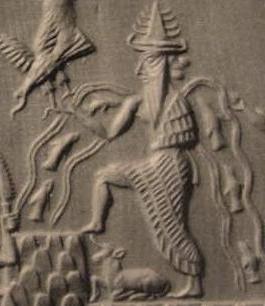Code of Hammurabi






The Code of Hammurabi is one of the oldest deciphered writings of significant length in the world. Created by Babylonian king Hammurabi in the 18th century BCE, it is a comprehensive set of 282 laws, inscribed on a stele. The Code covers a range of topics, including trade, family law, labor law, and property law, providing insights into the social, economic, and legal structures of ancient Mesopotamia.
Origins and Discovery[edit]
The Code was commissioned by Hammurabi after he took power in Babylon, aiming to unify the diverse groups within his empire and provide a common legal framework. The stele containing the Code was discovered in 1901 by a team led by Jean-Vincent Scheil in Susa, Iran, where it had been taken as plunder over a millennium after its creation.
Content[edit]
The laws inscribed on the stele are written in the Akkadian language, using cuneiform script. They begin with a prologue that credits Hammurabi with establishing justice in the land, followed by the laws themselves, and conclude with an epilogue that invokes divine retribution against those who would disobey the laws. The Code is notable for its "an eye for an eye" philosophy, although this principle was applied differently depending on the social status of the accused and the victim.
Legal Principles[edit]
The Code of Hammurabi is significant for its early examples of legal principles that are foundational to modern legal systems. These include the presumption of innocence, the right to present evidence in one's defense, and the establishment of a judicial process for resolving disputes. The laws also detail various penalties for specific crimes, ranging from fines to physical punishment and death.
Impact and Legacy[edit]
The influence of the Code of Hammurabi extends beyond the ancient Near East. It is considered a precursor to later legal codes in the region, including the Mosaic Law of the ancient Israelites. Its principles can be seen in the legal systems of many cultures and have contributed to the development of international legal standards.
Preservation and Study[edit]
The stele on which the Code is inscribed is housed in the Louvre Museum in Paris. It remains an important object of study for historians, archaeologists, and legal scholars, providing valuable insights into ancient Mesopotamian society.
See Also[edit]
Ad. Transform your life with W8MD's Budget GLP-1 injections from $75


W8MD offers a medical weight loss program to lose weight in Philadelphia. Our physician-supervised medical weight loss provides:
- Weight loss injections in NYC (generic and brand names):
- Zepbound / Mounjaro, Wegovy / Ozempic, Saxenda
- Most insurances accepted or discounted self-pay rates. We will obtain insurance prior authorizations if needed.
- Generic GLP1 weight loss injections from $75 for the starting dose.
- Also offer prescription weight loss medications including Phentermine, Qsymia, Diethylpropion, Contrave etc.
NYC weight loss doctor appointmentsNYC weight loss doctor appointments
Start your NYC weight loss journey today at our NYC medical weight loss and Philadelphia medical weight loss clinics.
- Call 718-946-5500 to lose weight in NYC or for medical weight loss in Philadelphia 215-676-2334.
- Tags:NYC medical weight loss, Philadelphia lose weight Zepbound NYC, Budget GLP1 weight loss injections, Wegovy Philadelphia, Wegovy NYC, Philadelphia medical weight loss, Brookly weight loss and Wegovy NYC
|
WikiMD's Wellness Encyclopedia |
| Let Food Be Thy Medicine Medicine Thy Food - Hippocrates |
Medical Disclaimer: WikiMD is not a substitute for professional medical advice. The information on WikiMD is provided as an information resource only, may be incorrect, outdated or misleading, and is not to be used or relied on for any diagnostic or treatment purposes. Please consult your health care provider before making any healthcare decisions or for guidance about a specific medical condition. WikiMD expressly disclaims responsibility, and shall have no liability, for any damages, loss, injury, or liability whatsoever suffered as a result of your reliance on the information contained in this site. By visiting this site you agree to the foregoing terms and conditions, which may from time to time be changed or supplemented by WikiMD. If you do not agree to the foregoing terms and conditions, you should not enter or use this site. See full disclaimer.
Credits:Most images are courtesy of Wikimedia commons, and templates, categories Wikipedia, licensed under CC BY SA or similar.
Translate this page: - East Asian
中文,
日本,
한국어,
South Asian
हिन्दी,
தமிழ்,
తెలుగు,
Urdu,
ಕನ್ನಡ,
Southeast Asian
Indonesian,
Vietnamese,
Thai,
မြန်မာဘာသာ,
বাংলা
European
español,
Deutsch,
français,
Greek,
português do Brasil,
polski,
română,
русский,
Nederlands,
norsk,
svenska,
suomi,
Italian
Middle Eastern & African
عربى,
Turkish,
Persian,
Hebrew,
Afrikaans,
isiZulu,
Kiswahili,
Other
Bulgarian,
Hungarian,
Czech,
Swedish,
മലയാളം,
मराठी,
ਪੰਜਾਬੀ,
ગુજરાતી,
Portuguese,
Ukrainian
